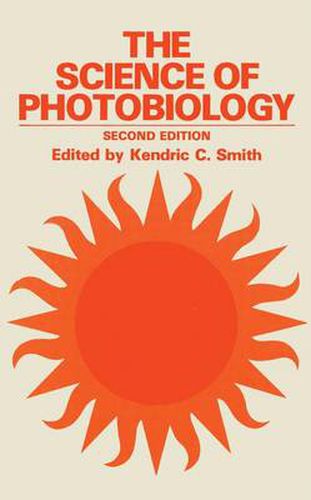Readings Newsletter
Become a Readings Member to make your shopping experience even easier.
Sign in or sign up for free!
You’re not far away from qualifying for FREE standard shipping within Australia
You’ve qualified for FREE standard shipping within Australia
The cart is loading…






This title is printed to order. This book may have been self-published. If so, we cannot guarantee the quality of the content. In the main most books will have gone through the editing process however some may not. We therefore suggest that you be aware of this before ordering this book. If in doubt check either the author or publisher’s details as we are unable to accept any returns unless they are faulty. Please contact us if you have any questions.
The first edition of The Science of Photobiology was published in 1977, and was the first textbook to cover all of the major areas of photobiology. The science of photobiology is currently divided into 14 subspecialty areas by the American Society for Photobiology. In this edition, however, the topics of phototechnology and spectroscopy have been com bined in a new chapter entitled Photophysics. The other subspecialty areas remain the same, i.e., Photochemistry, Photosensitization, UV Radiation Effects, Environmental Photobiology, Photomedicine, Circadian Rhythms, Extraretinal Photoreception, Vision, Photomorphogenesis, Photomovement, Photosynthesis, and Bioluminescence. This book has been written as a textbook to introduce the science of photobiology to advanced undergraduate and graduate students. The chapters are written to provide a broad overview of each topic. They are designed to contain the amount of information that might be presented in a one-to two-hour general lecture. The references are not meant to be exhaustive, but key references are included to give students an entry into the literature. Frequently a more recent reference that reviews the literature will be cited rather than the first paper by the author making the original discovery. The chapters are not meant to be a repository of facts for research workers in the field, but rather are concerned with demon strating the importance of each specialty area of photobiology, and documenting its relevance to current and/or future problems of man.
$9.00 standard shipping within Australia
FREE standard shipping within Australia for orders over $100.00
Express & International shipping calculated at checkout
This title is printed to order. This book may have been self-published. If so, we cannot guarantee the quality of the content. In the main most books will have gone through the editing process however some may not. We therefore suggest that you be aware of this before ordering this book. If in doubt check either the author or publisher’s details as we are unable to accept any returns unless they are faulty. Please contact us if you have any questions.
The first edition of The Science of Photobiology was published in 1977, and was the first textbook to cover all of the major areas of photobiology. The science of photobiology is currently divided into 14 subspecialty areas by the American Society for Photobiology. In this edition, however, the topics of phototechnology and spectroscopy have been com bined in a new chapter entitled Photophysics. The other subspecialty areas remain the same, i.e., Photochemistry, Photosensitization, UV Radiation Effects, Environmental Photobiology, Photomedicine, Circadian Rhythms, Extraretinal Photoreception, Vision, Photomorphogenesis, Photomovement, Photosynthesis, and Bioluminescence. This book has been written as a textbook to introduce the science of photobiology to advanced undergraduate and graduate students. The chapters are written to provide a broad overview of each topic. They are designed to contain the amount of information that might be presented in a one-to two-hour general lecture. The references are not meant to be exhaustive, but key references are included to give students an entry into the literature. Frequently a more recent reference that reviews the literature will be cited rather than the first paper by the author making the original discovery. The chapters are not meant to be a repository of facts for research workers in the field, but rather are concerned with demon strating the importance of each specialty area of photobiology, and documenting its relevance to current and/or future problems of man.